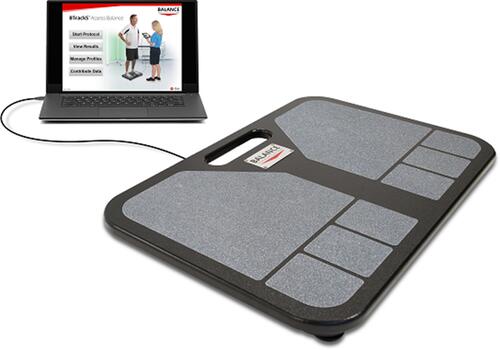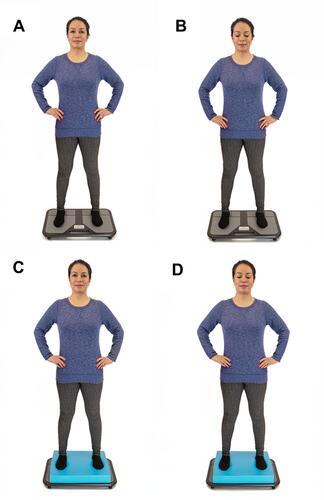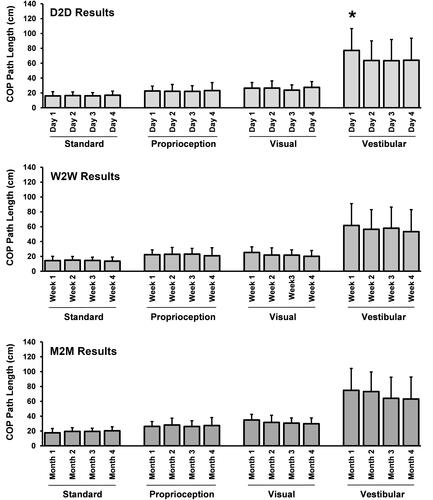Figures & data
Table 1 Sex and Age Characteristics for Time Duration Groups
Figure 1 Experimental equipment used in this study included the BTrackS Balance Plate (right) and BTrackS Assess Balance software running on a laptop (left). Image provided is property of corresponding author.

Figure 2 The four testing trial conditions utilized in the BTrackS mCTSIB protocol. Each trial requires individuals to stand as still as possible on the BTrackS Balance Plate with feet shoulder width and hands on hips. Trial 1 ((A) Standard condition) is performed with eyes open while standing on the firm plate surface. Trial 2 ((B) Proprioceptive condition) is performed with eyes closed while standing on the firm plate surface. Trial 3 ((C) Vision condition) and trial 4 ((D) Vestibular condition) with eyes open and closed, respectively, while standing on a compliant foam cushion. The individual depicted in this figure was not a study participant and gave informed consent for use of her likeness.

Figure 3 Mean±SD Total COP Path Length results for the D2D (top), W2W (middle) and M2M (bottom) time duration groups in each of the four BTrackS mCTSIB conditions (ie, Standard, Proprioception, Vision and Vestibular). A significant difference (*) was only seen between Day 1 and Day 2 for the D2D group in the vestibular condition.

Table 2 Reliability of BTrackS mCTSIB Conditions Across Various Time Durations
